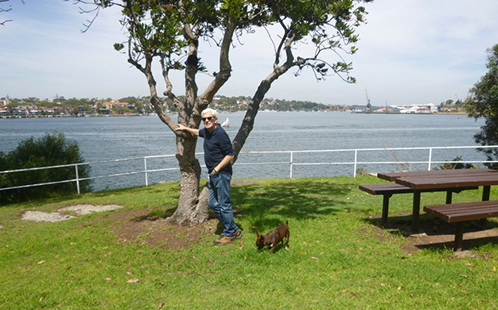5 signs of climate change that I witnessed in my lifetime

Gerry Grove-White is concerned about his generation's inaction on climate change and the challenges this has created for young Australians.
When the Intergovernmental Panel on Climate Change (IPCC) released its 15th report, it was once again a stark reminder how far global warming has progressed threatening our very livelihood and future as a human race. And while the younger generation has been singled out for their lack of climate knowledge (Western Sydney University’s millennials survey), let’s not forget that it was my generation, the baby boomers, that failed to take action when evidence of climate change was mounting in the 1980s and beyond.
I am a 68-year old engineer who has worked in the energy industry since graduating in 1971. The power company I worked for accepted the reality of climate change as early as in the late 1980s and modified its investments accordingly. The overwhelming body of scientific research and evidence over the last four decades unequivocally demonstrated that rising sea levels, extreme weather events, rapid increases in both atmospheric and sea water temperature, accelerating melting of the polar ice caps, as well as rapidly rising CO2 concentrations in the atmosphere are major effects of climate change. Yet, as a society we went backwards, with vested interests, politicians and self-proclaimed experts spreading misinformation through mass and social media channels to make us doubt the validity of climate science.
I have seen the changes happening around me in my lifetime, here in western Sydney and around the world:
- It’s getting hotter. The number of days above 40 degrees Celsius each year have increased from about 3-4 days per year in 2001 to somewhere in excess of 10-15 days in 2018. Unfortunately, as a species we don’t tolerate heat well, and we’re placing human lives at risk from high temperature. Hundreds of people die each year in India from the heat (50+ degree days)
- Raising the level of Warragamba Dam by 14 meters is under consideration as a result of revised forecast on the severity of the 100-year flood on the surrounding communities living on the flood plain. This places thousands of dwellings at risk of severe flooding, and would require mass evacuation of residents. The previous assessment of the 100-year flood was in the early 1990s. What changed in the intervening 25 years is that the forecasts of extreme rainfall events have increased.
- Gas and oil platforms now have to be built higher in order to withstand the revised projected 100-year wave. The Thames flood protection barrier is now being used 15-20 times pa as opposed to 2 or 3 times pa when it was first built in 1984.
- Bush fires around the world (Portugal, Greece, USA, and Australia) set new records each year for severity and the areas destroyed.
- The world’s fauna is increasingly threatened with many species showing rapid declines in populations, many of which are attributed to changes in the climate.
These matters are not just postulated by science, they are the daily lived reality. When I look at my beautiful grandchildren, I feel guilty for my generation’s failures to address climate change heads-on. Millennials, don’t repeat our mistakes. We do not have much time left.
About the author:
Gerry Grove-White is a retired mechanical engineer with 45 years’ experience in power generation around the world including gas, oil, coal, nuclear, wind, hydro, solar and geothermal. He is currently studying for a Masters of Teaching at Western Sydney University as a way of paying forward the inspiration from some amazing teachers in his youth.
Latest News

Opinion: Most bees don’t die after stinging – and other surprising bee facts
Most of us have been stung by a bee and we know it’s not much fun. But maybe we also felt a tinge of regret, or vindication, knowing the offending bee will die. Right? Well, for 99.96% of bee species, that’s not actually the case.

Western Sydney University receives transformational donation to support LGBTIQA+ community
Western Sydney University has welcomed a philanthropic donation from The Brennan Lynch Foundation.

Western Sydney University ranks among world’s best for 23 subjects
The University has been named as one of the world’s top universities for the study of 23 subjects in the latest edition of the QS World University Rankings by Subject, including being ranked in the top 50 for Nursing.
Mobile options:

